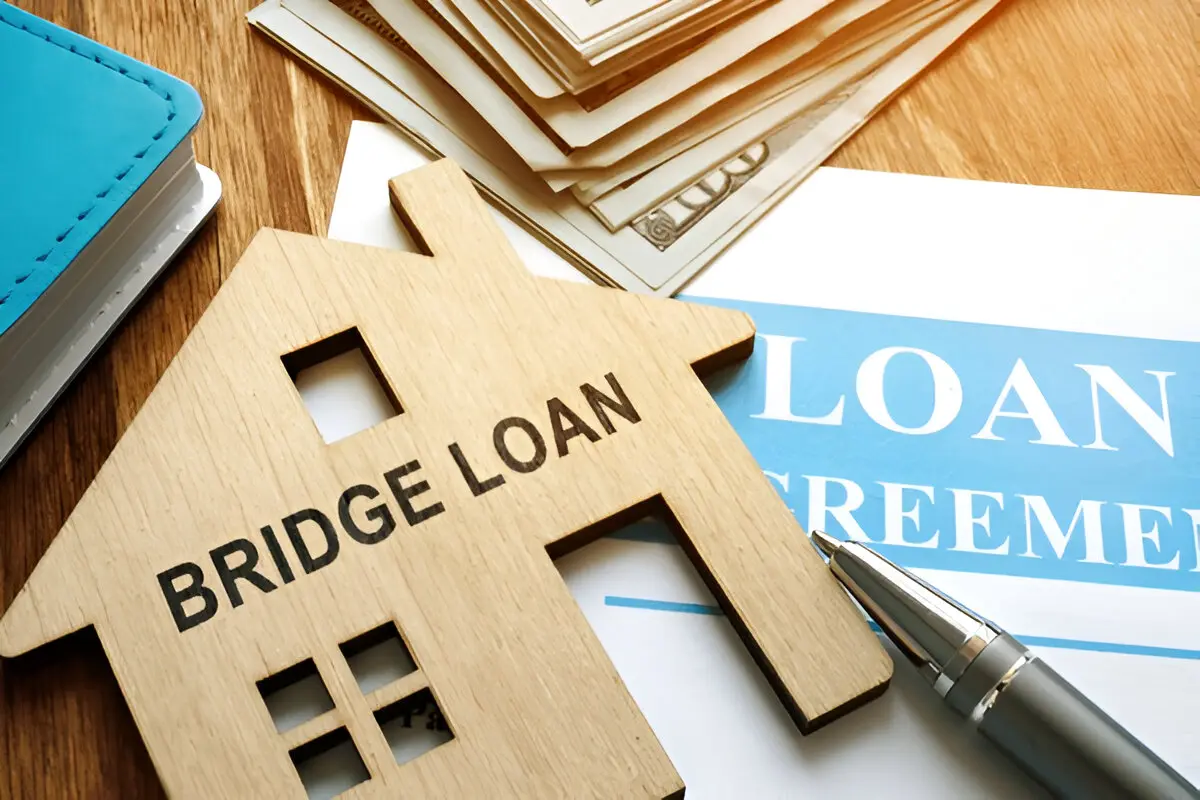In India, millions of people face situations where a small but urgent expense pops up: a medical bill of ₹20,000, education fees of ₹15,000, or a travel booking of ₹30,000. For such needs, waiting for salary credit isn’t always an option. That’s where a bridge loan in India can be used to its utmost potential.
Although known for being used in property purchases, today’s bridge loans also act as a short-ticket solution offered mainly by NBFCs and fintech lenders. These loans cover the immediate gap until your regular cash flow, salary, or reimbursements arrive. This shift makes bridge loans a niche but vital part of India’s credit ecosystem, especially for people who need short, compliant, and transparent funding without getting trapped in informal lending cycles.
Table of Contents
What Is a Bridge Loan?
A bridge loan is best defined in simple terms as a short-term loan that helps manage temporary financial gaps. It is commonly used during property transitions (like buying a new home before selling an old one) or when you’re waiting for long-term financing such as a sanctioned home loan or business loan to come through.
The bridge loan meaning is rooted in its purpose: it “bridges” the gap between immediate financial needs and future cash inflows. Unlike long-term borrowing, these loans are designed for quick turnaround situations and usually come with shorter repayment periods.
Types of Bridge Loans You Should Know About
Bridge loans aren’t uniform; they differ based on repayment certainty and borrower purpose. Let’s look at the types of bridge loans in the short-loan segment.
1. Closed Bridge Loan
A closed bridge loan comes with a fixed repayment date agreed upon in advance. Because lenders know exactly when they’ll be repaid, they’re more comfortable approving these loans. This certainty usually translates into lower interest rates compared to open bridge loans.
2. Open Bridge Loan
With an open bridge loan, there’s no set payoff date at the time of borrowing. Borrowers who are unsure when their incoming funds will arrive often prefer this option. Since the repayment timeline is uncertain, lenders protect themselves by charging higher interest rates or sometimes deducting the interest upfront from the loan amount.
3. First Charge Bridge Loan
In a first charge bridge loan, the lender has the primary right over the pledged property or asset. If the borrower defaults, this lender is paid before any others. Because the risk is lower, these loans often come with more favorable interest rates than second charge loans.
4. Second Charge Bridge Loan
A second charge bridge loan sits behind an existing first charge loan. This means the lender is repaid only after the first lender’s dues are cleared in case of default. While they allow borrowers to raise extra funds without disturbing the first loan, they carry higher risk for lenders and therefore come with higher interest rates.
Regulatory Touchpoint
As of April 2025, banks cannot extend these directly. Only NBFCs and fintechs may issue bridge loans, and they must:
- Disclose interest rates and repayment terms upfront.
- Avoid indefinite rollovers.
- Ensure compliance reporting to credit bureaus.
For borrowers, this creates a balance: faster access via NBFCs/fintechs but with clear accountability under RBI norms.
How Does a Bridge Loan Work?
Bridge loans are made with speed and simplicity in mind, especially when offered by NBFCs and fintech lenders. Here’s how the process typically flows:
- Application – Borrowers usually apply online with basic details and KYC documents.
- Assessment – Lenders check repayment capacity using income proofs, bank statements, and sometimes collateral if it’s a large-ticket requirement.
- Approval – Decisions are faster than conventional loans, often within 24–48 hours.
- Disbursal – Funds are credited directly into your bank account, sometimes the same day.
- Repayment – Either a one-time bullet repayment (when your expected funds arrive) or short-term EMIs.
This straightforward flow is what makes bridge loans attractive: they prioritize timeliness over complexity.
When Should You Consider Taking a Bridge Loan?
Bridge loans aren’t for everyday borrowing, they’re for specific scenarios where timing is critical:
- Property Transition – You want to buy a new home but haven’t yet received proceeds from selling your existing one. You can explore loan to value ratio to understand how bridge loans can assist in this scenario.
- Business Cash Flow – SMEs or freelancers awaiting client payments use bridge loans to keep operations running.
- Emergency Expenses – Medical bills, last-minute travel bookings, or school fee deadlines that can’t be postponed. You can also apply for emergency loans in these scenarios.
- Loan Disbursal Gaps – When a long-term loan is approved but disbursement is delayed, a bridge loan helps you avoid losing momentum.
If your financial situation involves an upcoming inflow that’s certain but delayed, that’s when a bridge loan makes sense.
Impact of Credit Score on Bridge Loan Approval
Even though they’re short-term, bridge loans directly affect your credit history. Repaying on time can:
- Strengthen your credit profile.
- Demonstrate your reliability in handling short-term credit.
On the flip side, delays are reported quickly to credit bureaus because repayment cycles are short. That means even one missed installment of instant personal loans can dent your score faster than with long-term loans. Treat bridge loans with the same seriousness as any other formal credit product.
Summary
Bridge loans are designed for situations where timing matters more than tenure. They aren’t replacements for personal or home loans, but they fill an important gap when immediate funds are needed. From property transactions to emergency expenses or business continuity, they act as a financial bridge until your expected inflows materialize.
The key is to use them strategically: only when you’re certain of future cash inflows and can commit to timely repayment. Done right, bridge loans are less about high costs and more about buying time when you need it most.








